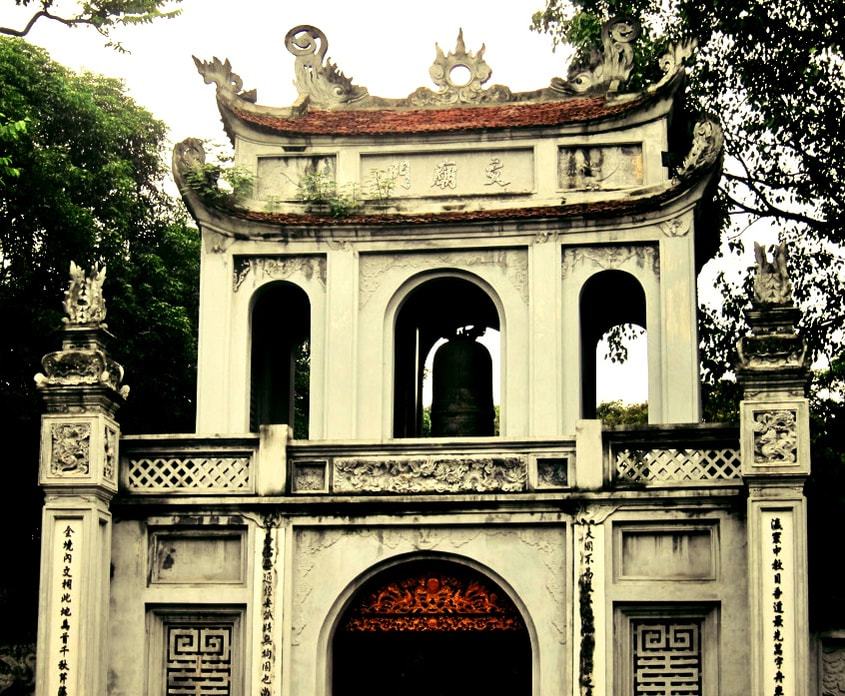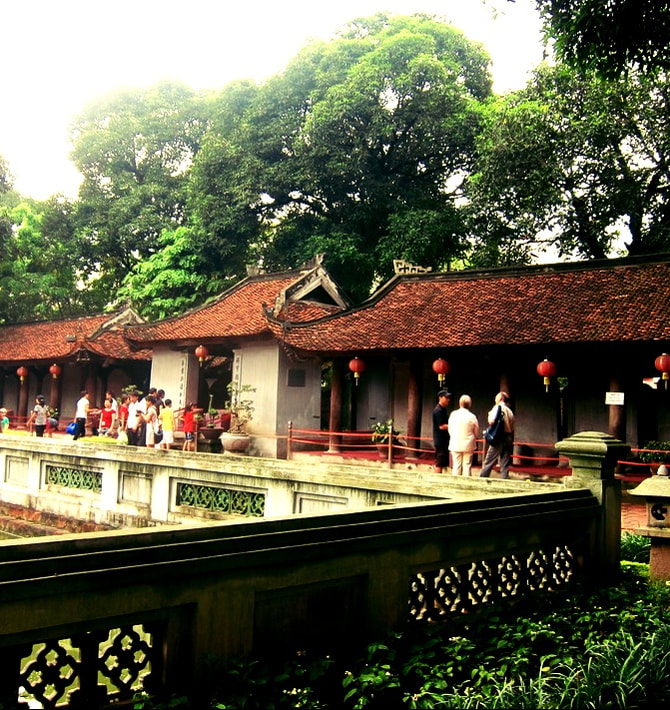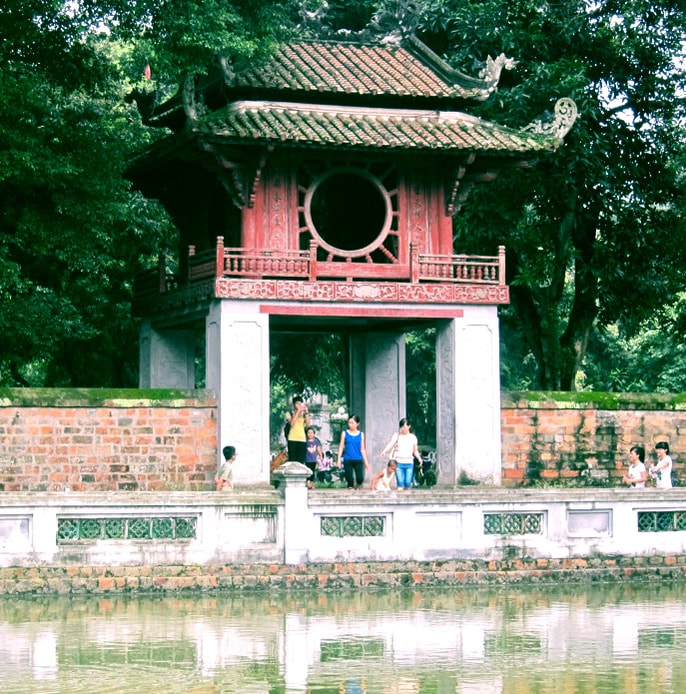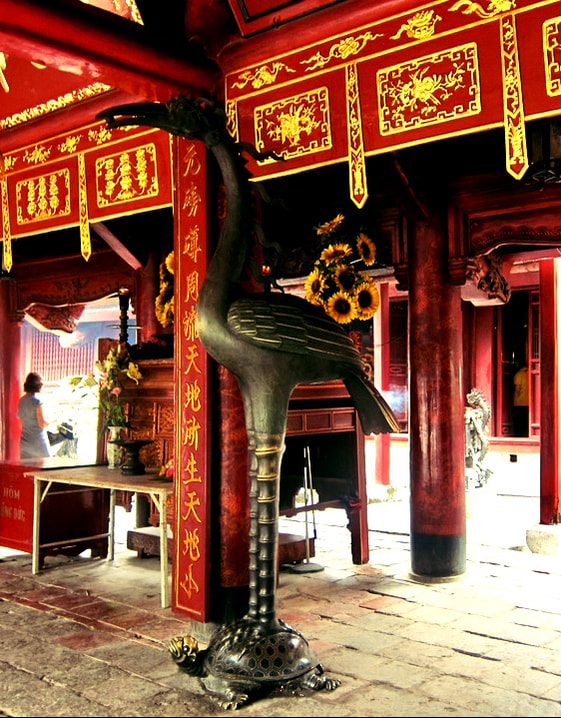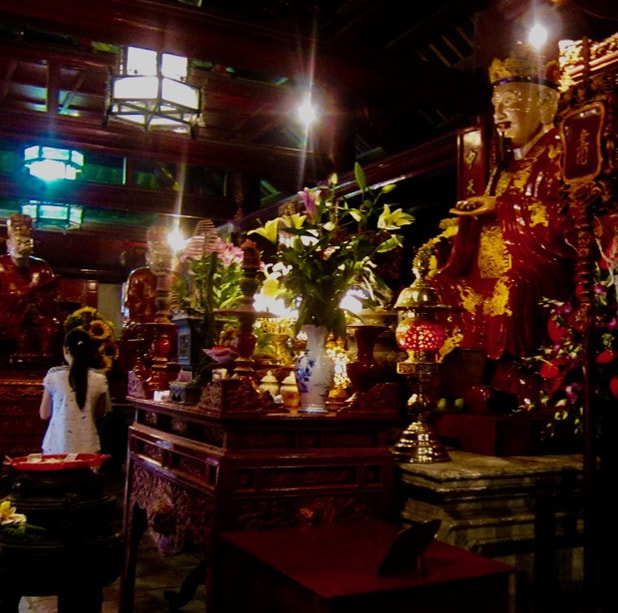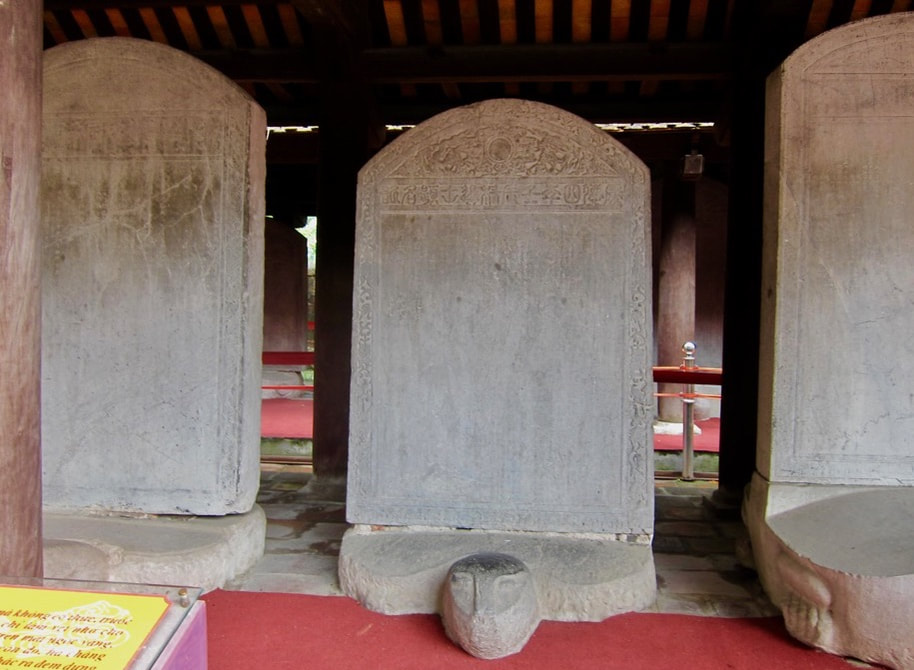Unlocking Wisdom's Sanctuary: Exploring Hanoi's Temple of Literature
Founded in 1070 by King Ly Thanh Tong, Van Mieu or the Temple of Literature hosted the first university in Vietnam, the Imperial Academy. It was the most elevated place of learning at a time when high position depended upon degrees.
Ph.D. degree and your name is chipped into a stone stelae and long after our florid labelled, signed, ribboned and mounted paper flimsies nowadays turn to dust, the names of degree holders from the 11th century will still be there, carved into stelae of their year of graduation. A mark on history.
By 1779, the university graduated over two thousand doctors.
When I visit this Temple, I like to find an isolated corner in the garden and imagine those days when the scholars themselves and their teachers walked these courtyards.
By 1779, the university graduated over two thousand doctors.
When I visit this Temple, I like to find an isolated corner in the garden and imagine those days when the scholars themselves and their teachers walked these courtyards.
The temple is more a garden than anything with its series of five courtyards. At one of these courtyards is a pagoda structure which houses statues of Confucius and his disciples, a tribute to the role that Confucius played in learning.
For me, this Temple of Literature is a monument to a society that puts learning at the top.
For me, this Temple of Literature is a monument to a society that puts learning at the top.
Temple Dedicated to Confucius
As this Temple is dedicated to Confucius, it was patterned after a temple in Qufu, Confucius' birthplace in Shandong Province in China. Covering about 54,000 sq. m., the complex includes Giam Park, the Literature Lake and five courtyards each reserved for a purpose.
As this Temple is dedicated to Confucius, it was patterned after a temple in Qufu, Confucius' birthplace in Shandong Province in China. Covering about 54,000 sq. m., the complex includes Giam Park, the Literature Lake and five courtyards each reserved for a purpose.
The Temple today still keeps much of its old shape. Full of old trees and with a well maintained garden, this quiet sanctuary is a good respite from the busy traffic and bustling crowd of Hanoi.
It must have been like this years ago when the scholars walked about the place deep in conversation with their mentors or with one another. I like visiting this temple when there is no crowd so I can contemplate its early years and enjoy the peace and quiet of the garden.
In this main gate of the temple, two dragons watch and the inscription "Ha Ma" reminding visitors in the past to dismount their horses before entering the Temple.
Three pathways lead from the entrance to the inner courtyards. The middle pathway was for the use of the King, the one to the left for the mandarins of administration and the one to the right, for the mandarins of the military.
It must have been like this years ago when the scholars walked about the place deep in conversation with their mentors or with one another. I like visiting this temple when there is no crowd so I can contemplate its early years and enjoy the peace and quiet of the garden.
In this main gate of the temple, two dragons watch and the inscription "Ha Ma" reminding visitors in the past to dismount their horses before entering the Temple.
Three pathways lead from the entrance to the inner courtyards. The middle pathway was for the use of the King, the one to the left for the mandarins of administration and the one to the right, for the mandarins of the military.
The Five Courtyards in the Temple of Literature
Each of these courtyards has each own unique character, each one a dedication to the key aspect of literature and learning. Each courtyard is separated by a wall and each has its own elaborate gate so named to show the courtyard's significance.
Each of these courtyards has each own unique character, each one a dedication to the key aspect of literature and learning. Each courtyard is separated by a wall and each has its own elaborate gate so named to show the courtyard's significance.
The First Courtyard in the Temple of Literature
As you can see in this picture, the first Courtyard extends from this Great Portico to the Great Middle Gate. It is a quiet garden said to have been used by ancient scholars for relaxation.
The Second Courtyard-The Pavilion of Literature
Built in 1805, the second courtyard in the Temple of Literature is a unique pavilion built on whitewashed stone stilts supporting a red pavilion with an elaborate roof and two circular windows. from the ceiling hangs a bronze bell which is rang solely for auspicious occasions.
Two other gates are in this courtyard, the Crystallization of Letters and the Magnificence of Letters, dedicated to the beauty of Literature both in form and content.
As you can see in this picture, the first Courtyard extends from this Great Portico to the Great Middle Gate. It is a quiet garden said to have been used by ancient scholars for relaxation.
The Second Courtyard-The Pavilion of Literature
Built in 1805, the second courtyard in the Temple of Literature is a unique pavilion built on whitewashed stone stilts supporting a red pavilion with an elaborate roof and two circular windows. from the ceiling hangs a bronze bell which is rang solely for auspicious occasions.
Two other gates are in this courtyard, the Crystallization of Letters and the Magnificence of Letters, dedicated to the beauty of Literature both in form and content.
The Third Courtyard - The Well of Heavenly Clarity
In this third courtyard, two halls display the treasures of the Temple. The treasures include the stelae of carved blue stone turtles honouring talent and encouraging study.
The turtle which symbolizes longevity is one of Vietnam's holy creatures together with the Phoenix, the Dragon, and the Unicorn.
In this third courtyard, two halls display the treasures of the Temple. The treasures include the stelae of carved blue stone turtles honouring talent and encouraging study.
The turtle which symbolizes longevity is one of Vietnam's holy creatures together with the Phoenix, the Dragon, and the Unicorn.
The Fourth Courtyard in the Temple of Literature -The Gate of Great Synthesis
An apt name for the fourth courtyard. Two additional gates are in this courtyard: The Golden Sound and the Jade Vibration. In the center of the courtyard is the House of Ceremonies.
In this courtyard are honored the great Confucian scholars.
Inside the Dai Thanh sanctuary are the statues of Confucius and his famous disciples, Mencius, Yanhui, Zengshen, and Zisi. Other altars for the ten hounoured philosophers are also here.
This is where most Vietnamese go and make their offering especially during the exam period.
An apt name for the fourth courtyard. Two additional gates are in this courtyard: The Golden Sound and the Jade Vibration. In the center of the courtyard is the House of Ceremonies.
In this courtyard are honored the great Confucian scholars.
Inside the Dai Thanh sanctuary are the statues of Confucius and his famous disciples, Mencius, Yanhui, Zengshen, and Zisi. Other altars for the ten hounoured philosophers are also here.
This is where most Vietnamese go and make their offering especially during the exam period.
The Fifth Courtyard in the Temple of Literature
When you go in the fifth courtyard, you will find a pagoda with statues of Confucius and his disciples. Incense are lighted and flowers are offered by students and their parents especially at the time of examinations.
When you go in the fifth courtyard, you will find a pagoda with statues of Confucius and his disciples. Incense are lighted and flowers are offered by students and their parents especially at the time of examinations.
The Doctors' Stelae at the Temple of Literature
UNESCO recognized these Doctors' Stelae as part of the world's documentary heritage and in 2011 placed this in the Memory of the World International Register of UNESCO.
The 1442 stelae expressed well the reason why the leadership of the Kingdom at that time did this. The translation here is taken in the guide published by the Centre for Culture and Scientific Activities:
Virtuous and talented men are state sustaining elements: The strength and prosperity of a state depends on its stable vitality and it becomes weaker as such vitality fails. That is why all the saint emperors and clear sighted kings didn't fail in seeing to the training of men of talent and the employment of literati to develop this vitality.
Among these famous doctor laureates were: Ngo Sy Lien, historian; Luong The Vinh,mathematician; Le Quy Don, encyclopedic scholar and Ngo Thi Nham, politician-diplomat. Here is a picture of some of the stellae:
UNESCO recognized these Doctors' Stelae as part of the world's documentary heritage and in 2011 placed this in the Memory of the World International Register of UNESCO.
The 1442 stelae expressed well the reason why the leadership of the Kingdom at that time did this. The translation here is taken in the guide published by the Centre for Culture and Scientific Activities:
Virtuous and talented men are state sustaining elements: The strength and prosperity of a state depends on its stable vitality and it becomes weaker as such vitality fails. That is why all the saint emperors and clear sighted kings didn't fail in seeing to the training of men of talent and the employment of literati to develop this vitality.
Among these famous doctor laureates were: Ngo Sy Lien, historian; Luong The Vinh,mathematician; Le Quy Don, encyclopedic scholar and Ngo Thi Nham, politician-diplomat. Here is a picture of some of the stellae:
Ordered by King Le Thanh Tong in 1484, the stelae depicted the names and addresses of the 1307 scholars who passed the 82 triennial royal exams. These stelae also praised the monarchs, gave the reasons for the royal examinations and the names of those who organized the exams. Of the 116 stelae, only 82 were left. The rest were lost.
Scholars in ancient Vietnamese society together with bureaucrats were highly regarded. They were considered Si, the top of the social ladder followed by the farmers, the craftsmen and workers with the merchants at the bottom. The Temple is a symbol of Vietnam's high regard for learning and scholarship.
Scholars in ancient Vietnamese society together with bureaucrats were highly regarded. They were considered Si, the top of the social ladder followed by the farmers, the craftsmen and workers with the merchants at the bottom. The Temple is a symbol of Vietnam's high regard for learning and scholarship.
Other Places to See and Things to do in Vietnam:
